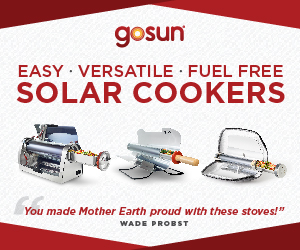- HOME
- Food Storage Guidelines
- Food Storage Containers
- Dry Canning and Freeze Drying Food
Dry Canning and Freeze Drying Food
by Ravenna
(Georgia)

I would love nothing more than to see a series specifically on dry canning in metal cans like how Thrive packages theirs. There really isn't any accurate, thorough, and buying resources & information on this type of "canning." I am really interested as several years ago I got into more dehydrating and now learning more about freeze-drying. I personally think that it is not only very beneficial but also in some cases very necessary to know how to preserve food in all areas. Whether it be freezing, water bath canning, pressure canning, steam canning, dehydrating, and/or freeze-drying. Variety in storage methods is just as important as knowing how to freeze/can/ or dehydrated. Thanks!
____________________________________
Joan - Admin
To address your first sentence, Thrive foods are freeze dried or dehydrated in metal cans as are all preparedness store products. Freeze drying preserves the most nutrition in food products and, combined with an oxygen-free environment in each metal can, will last 25-30 years. The only safe way to freeze dry at home is to buy a machine that is quite expensive. (Read about them here: Buying a Home Freeze Dryer, What to Know Before You Go) After reading this article, I can't imagine how it would be possible to freeze dry food at home without a machine.
However, if you dehydrate at home, there is a tool that can seal metal cans (using oxygen absorbers in the can). The only one I know of was owned by the L.D.S. Cannery. We used to be able to borrow it, as well as buy the #10 cans from them. I am unaware if it is available any longer.
At Family Survival Planning, I have tried to list every safe method of preserving food which includes freezing, canning, and dehydrating. Because dry canning and steam drying are not considered safe methods, I have chosen not to include them here.
What may make dry canning unsafe?
Even dry foods contain moisture. Common foods like dry flour, dry beans and even dried fruits contain 11-30% moisture (water). Placing any food in a heating oven causes moisture to ‘move’ or migrate towards the surface of the food where the moisture may evaporate. Moisture migration in dry foods can actually cause pockets of moisture to develop within a food or moisture to condense on the inside of the container. Once the container is sealed, these pockets of moisture could support the growth of mold, bacterial spores (think Clostridium botulinum), or even some pathogens such as Salmonella that are resistant to drying. This could be especially true of home-dried foods that are ‘canned.’ (Source)











